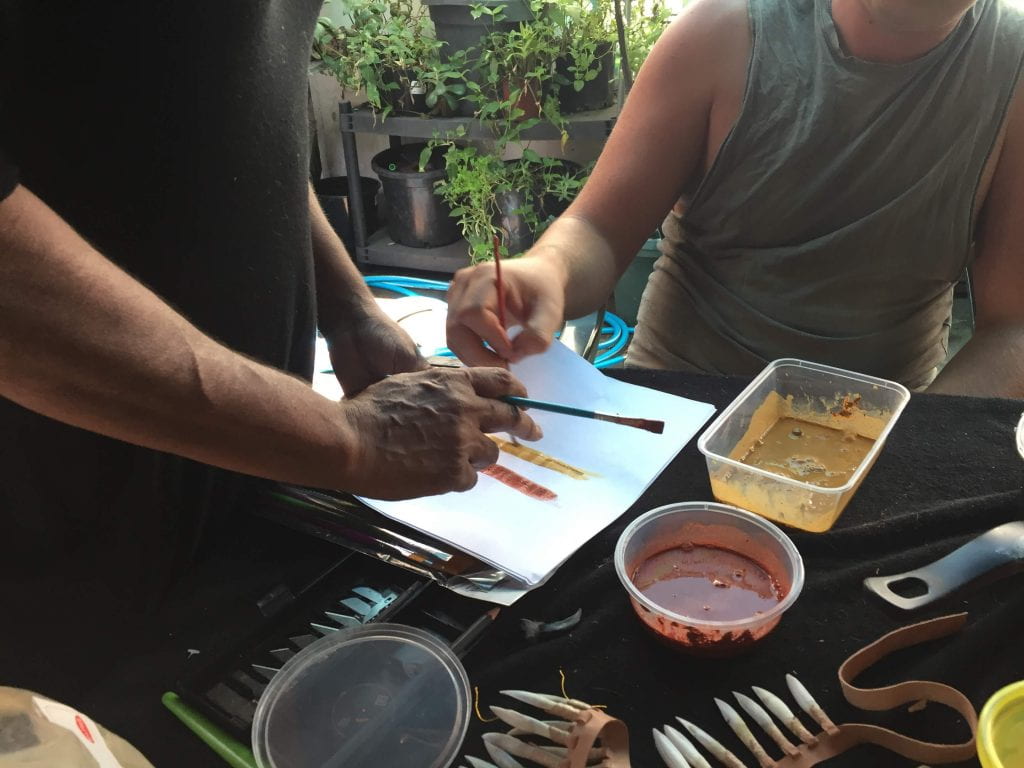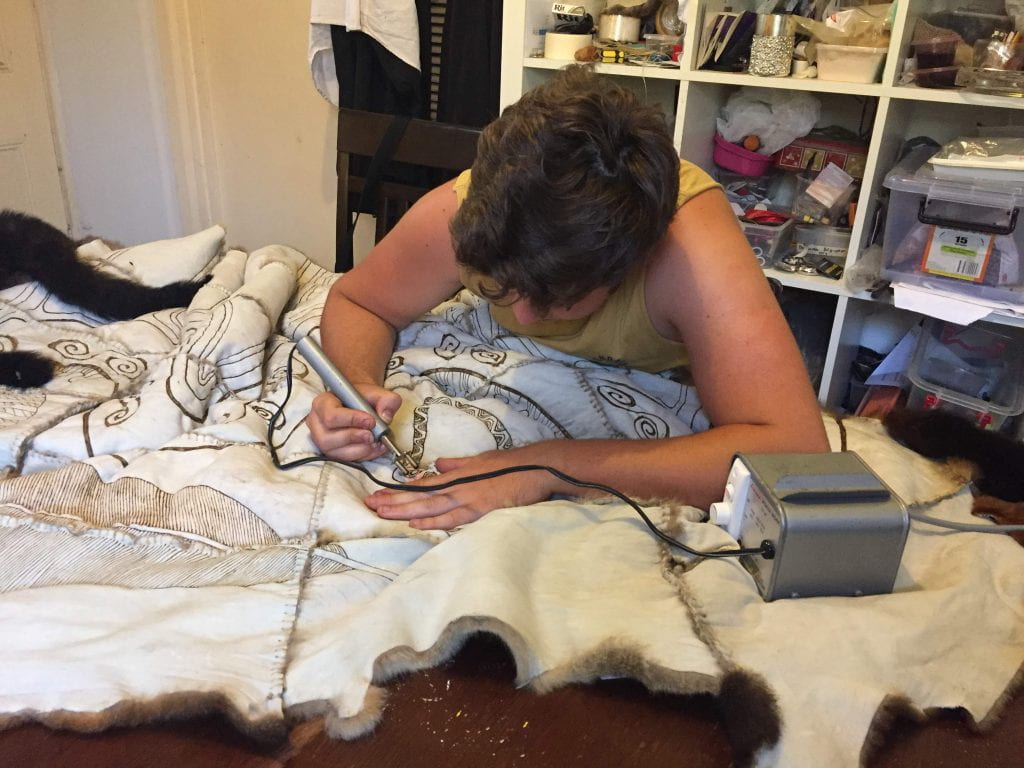About
Developing a digital living archive where Indigenous artists can connect their work in ways reflecting Indigenous worldviews.
From 2020, the living archive has been supported by an Australian Research Council Discovery Indigenous Fellowship (ARC INDP). The project, now known as Indigenous Storytelling and the Living Archive of Aboriginal Knowledge, is a collaboration with the Ngukurr community located in south-east Arnhem Land, Northern Territory, Australia. The aim of the project is to find out where collections of the Ngukurr community’s material culture and archival information are held. The ARC INDPalso includes knowledge exchange between people in Ngukurr, including artists, and south-east Australian Aboriginal artists, Maree Clarke (Yorta Yorta/Wamba Wamba/Mutti Mutti/Boonwurrung) and Mitch Mahoney (Boonwurrung). All are working together to support new stories to revitalise Indigenous knowledge held in ‘archives’ from contemporary perspective.
The ARC INDP also responds to earlier work funded by the Melbourne Social Equity Institute, the Living Archive of Aboriginal Art (see this link https://socialequity.unimelb.edu.au/projects/the-living-archive-of-aboriginal-art).
Culture is produced and negotiated as living, ongoing and dynamic. Many Aboriginal artists’ work reflects the complexities of Indigenous knowledge systems. Despite digital technologies and archiving practices that allow Indigenous communities globally to engage with and retrieve cultural information (e.g. Ara Irititja, Murkurtu), there is nowhere Indigenous artists can digitally register, control and link-up their work/artworlds in ways reflecting Indigenous worldviews.
For example, Yorta Yorta/Wamba Wamba/Mutti Mutti/Boonwurrung artist Maree Clarke is a leading figure in revivifying her Ancestors’ material culture. Her art practice incorporates individual and collective engagement in making possum-skin cloaks, kangaroo-tooth necklaces and river-reed body adornments; responding to her cultural heritage and often inspired by Ancestral objects in collecting institutions/archives. Many of Maree’s artworks are held in museum/gallery collections, but have not been registered in ways that encapsulate the interconnectedness of the storytelling, performance, knowledge of/relationships to Country and intergenerational knowledge exchange involved in their ‘making’. Such interconnectedness is significant in supporting Aboriginality and addressing social, emotional and cultural determinants of health.
This project investigates the idea of a digital ‘living archive’ as a way to support such interconnections, including by rethinking the archive as a place where knowledge/information is retrieved, stored and preserved as representations of cultural value; refiguring it as an active, creative and collaborative space for knowledge production. A ‘living archive’ – rather than a closed/static system – is flexible, dynamic and interactive and seeks to support artist/community control of data and knowledge from Galleries, Libraries, Archives, Museums (GLAMs).
The living archive responds to research conducted by Associate Professor Richard Chenhall and Dr Fran Edmonds during the recent ARC Linkage Project Aboriginal young people in Victoria and Digital Storytelling, which found that despite Aboriginal people having increasing access to and engagement with cultural heritage through digital archives, archival systems have limited capacity to reflect a non-linear, interactive ‘living archive’ that adequately responds to Indigenous worldviews.
The Living Archive of Aboriginal Art was supported by the Melbourne Social Equity Institute https://socialequity.unimelb.edu.au/about
Search in our archives to find out about past and upcoming events/projects.


